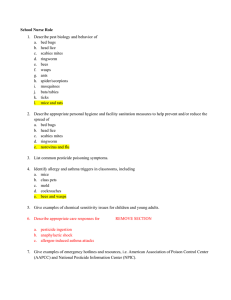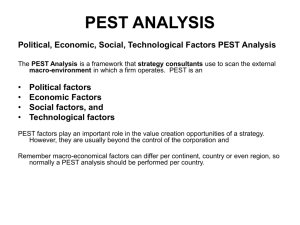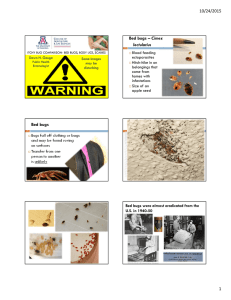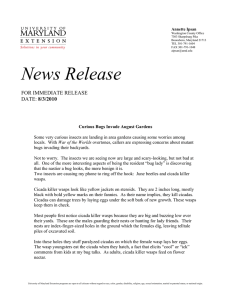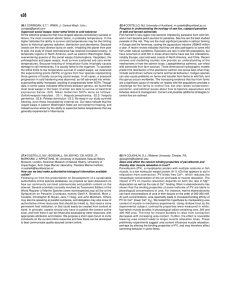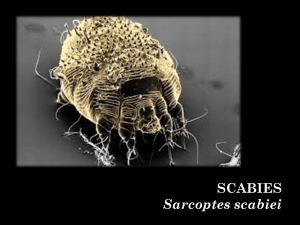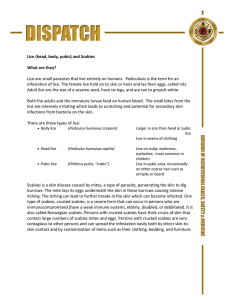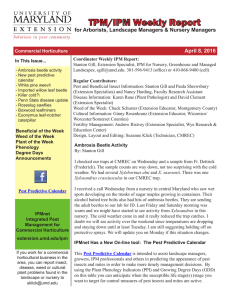(6) Module: School Nurse Learning Lesson 1: Pest Biology and Behavior
advertisement
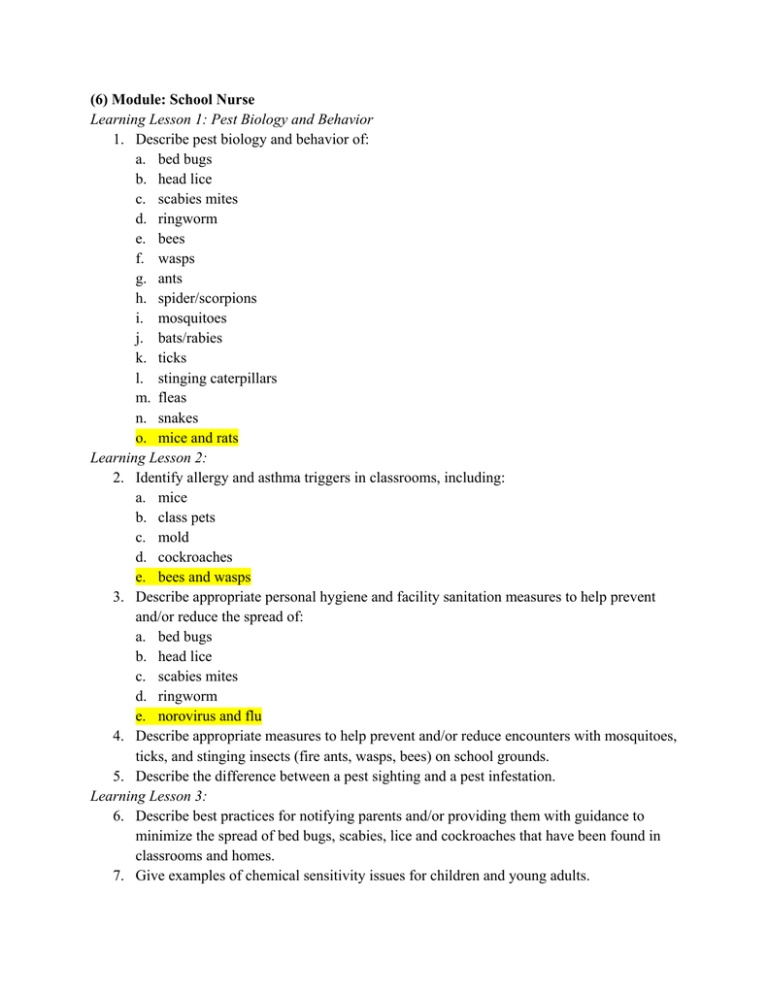
(6) Module: School Nurse Learning Lesson 1: Pest Biology and Behavior 1. Describe pest biology and behavior of: a. bed bugs b. head lice c. scabies mites d. ringworm e. bees f. wasps g. ants h. spider/scorpions i. mosquitoes j. bats/rabies k. ticks l. stinging caterpillars m. fleas n. snakes o. mice and rats Learning Lesson 2: 2. Identify allergy and asthma triggers in classrooms, including: a. mice b. class pets c. mold d. cockroaches e. bees and wasps 3. Describe appropriate personal hygiene and facility sanitation measures to help prevent and/or reduce the spread of: a. bed bugs b. head lice c. scabies mites d. ringworm e. norovirus and flu 4. Describe appropriate measures to help prevent and/or reduce encounters with mosquitoes, ticks, and stinging insects (fire ants, wasps, bees) on school grounds. 5. Describe the difference between a pest sighting and a pest infestation. Learning Lesson 3: 6. Describe best practices for notifying parents and/or providing them with guidance to minimize the spread of bed bugs, scabies, lice and cockroaches that have been found in classrooms and homes. 7. Give examples of chemical sensitivity issues for children and young adults. 8. List acute and chronic symptoms of pesticide poisoning. 9. Give examples of emergency hotlines and resources.
